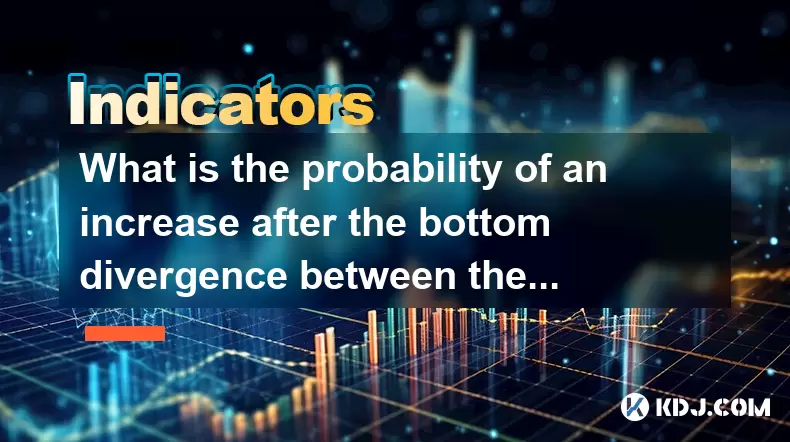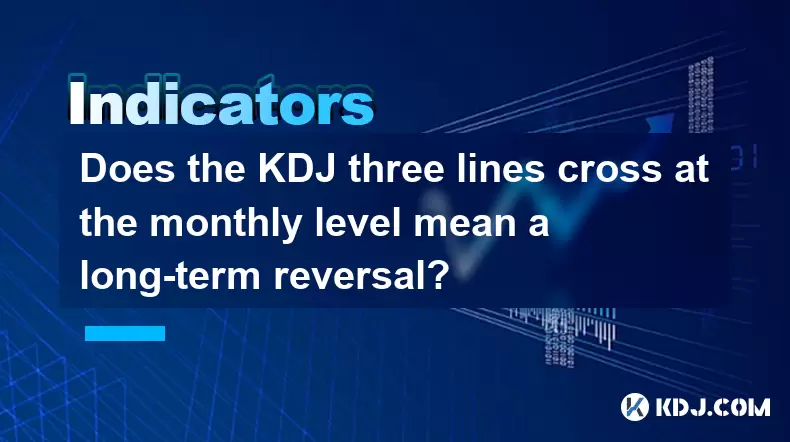-
 Bitcoin
Bitcoin $115100
-2.99% -
 Ethereum
Ethereum $3642
-1.38% -
 XRP
XRP $3.027
-5.51% -
 Tether USDt
Tether USDt $1.000
-0.05% -
 BNB
BNB $763.4
-1.32% -
 Solana
Solana $177.2
-5.42% -
 USDC
USDC $0.9999
-0.02% -
 Dogecoin
Dogecoin $0.2247
-6.47% -
 TRON
TRON $0.3135
0.23% -
 Cardano
Cardano $0.7824
-4.46% -
 Hyperliquid
Hyperliquid $42.53
-0.97% -
 Stellar
Stellar $0.4096
-6.09% -
 Sui
Sui $3.662
-2.61% -
 Chainlink
Chainlink $17.63
-3.57% -
 Bitcoin Cash
Bitcoin Cash $536.3
2.94% -
 Hedera
Hedera $0.2450
0.34% -
 Avalanche
Avalanche $23.23
-3.15% -
 Litecoin
Litecoin $112.2
-1.23% -
 UNUS SED LEO
UNUS SED LEO $8.976
-0.30% -
 Shiba Inu
Shiba Inu $0.00001341
-2.72% -
 Toncoin
Toncoin $3.101
-2.44% -
 Ethena USDe
Ethena USDe $1.001
-0.05% -
 Uniswap
Uniswap $10.08
-1.97% -
 Polkadot
Polkadot $3.938
-2.77% -
 Monero
Monero $323.9
0.87% -
 Dai
Dai $0.9999
-0.02% -
 Bitget Token
Bitget Token $4.481
-1.69% -
 Pepe
Pepe $0.00001199
-5.94% -
 Aave
Aave $288.2
-0.68% -
 Cronos
Cronos $0.1279
0.36%
Should I follow up with a full position when the trading volume suddenly increases?
A sudden trading volume spike signals heightened activity but requires confirmation from price action and indicators to distinguish real momentum from manipulation.
Jul 25, 2025 at 12:28 am

Understanding Sudden Increases in Trading Volume
A sudden spike in trading volume often signals heightened market activity and can indicate that new information has entered the market. This could be due to news events, macroeconomic data releases, whale transactions, or coordinated trading activity. When volume surges, it typically means that more participants are entering the market, which can lead to increased price volatility. It’s essential to recognize that high volume alone does not determine price direction—it only reflects the intensity of trading. For instance, a surge in volume could accompany a sharp price rise (accumulation) or a steep drop (distribution). Traders must analyze volume in context with price action, chart patterns, and technical indicators to assess the underlying momentum.
Interpreting Volume in Relation to Price Trends
To make informed decisions, traders should examine whether volume aligns with existing price trends. If the price is rising and volume increases simultaneously, this may confirm bullish momentum and suggest strong buying interest. Conversely, if the price is falling on high volume, it could indicate panic selling or bearish conviction. However, a sudden volume spike without a clear directional move—such as during a consolidation phase—might reflect indecision or a trap set by large players. Using tools like volume profile charts or on-balance volume (OBV) helps distinguish between genuine breakouts and false signals. For example, if a cryptocurrency breaks above resistance with high volume, it strengthens the likelihood of a sustained upward move.
Risks of Deploying a Full Position Immediately
Jumping into a full position based solely on a volume spike carries significant risks. Market manipulation, especially in less liquid altcoins, can create artificial volume surges designed to trigger stop-loss orders or lure retail traders into unfavorable entries. This tactic, known as a "pump and dump", is common in low-cap cryptocurrencies. Entering with full capital exposes traders to maximum downside if the move reverses. Moreover, high-frequency trading bots and institutional players often exploit retail overreaction. A prudent approach involves partial entry strategies, where only a fraction of the intended position is deployed initially, allowing room to average in or out based on subsequent price behavior.
Strategic Position Sizing and Risk Management
Effective trading requires disciplined position sizing regardless of volume signals. A recommended method is to allocate only a small percentage of total capital—typically 1% to 5%—per trade, depending on risk tolerance. When volume spikes, consider using a tiered entry:
- Enter 30% of the intended position after confirming the breakout with closing prices beyond key levels.
- Add another 30% if the price retests the breakout zone and holds.
- Allocate the remaining 40% only if momentum continues and additional indicators (like RSI or MACD) support the trend.
This layered approach reduces exposure to false breakouts. Also, always set a stop-loss order below recent swing lows (for longs) or above swing highs (for shorts) to limit potential losses. Use trailing stops to protect profits as the trade moves in your favor.Using Confirmatory Indicators Alongside Volume
Volume should never be analyzed in isolation. Combine it with other technical tools to improve accuracy. For example: - Moving averages: A price crossing above the 50-day or 200-day MA on high volume increases the reliability of a bullish signal.
- Relative Strength Index (RSI): If volume spikes while RSI is near 70, it may suggest overbought conditions and a potential reversal.
- MACD histogram: Expanding bars alongside rising volume can confirm accelerating momentum.
- Order book depth: On exchanges with visible order books, check whether large buy or sell walls support the volume surge.
These tools help validate whether the volume increase reflects sustainable interest or short-term noise.Practical Steps to Respond to a Volume Spike
When you observe a sudden increase in trading volume, follow these steps methodically: - Pause and assess: Do not act immediately. Wait for at least one full candle (e.g., 1-hour or 4-hour) to close beyond a key level.
- Check the asset’s fundamentals: Has there been a recent listing, partnership, or protocol upgrade? News can justify volume spikes.
- Analyze multi-timeframe charts: Look at higher timeframes (daily, 4-hour) to determine if the move aligns with broader trends.
- Monitor social sentiment: Platforms like Twitter, Reddit, or Telegram can reveal whether the surge is driven by hype or organic demand.
- Execute a partial entry: Place a limit order for a small portion of your planned position near the breakout retest zone.
- Set clear exit rules: Define profit targets and stop-loss levels before entering, and stick to them.
Frequently Asked Questions
Can high trading volume occur without price movement?
Yes, this is known as volume divergence. It often happens during consolidation phases where large orders are filled near the same price level. This can precede a breakout, so monitoring for a directional close beyond range boundaries is crucial.How do I distinguish between organic volume and bot-generated volume?
Organic volume usually coincides with news, exchange listings, or major on-chain activity. Bot-driven volume tends to appear in repetitive patterns, lacks fundamental catalysts, and may involve rapid microtransactions. Checking on-chain data via platforms like Glassnode or Santiment can help identify real user activity.Should I use leverage when trading on high volume?
Leverage amplifies both gains and losses. Even with strong volume signals, leveraged positions increase liquidation risk, especially during volatile reversals. It is safer to use leverage only when multiple confirmations exist and with strict risk controls.What timeframes are best for analyzing volume spikes?
Short-term traders should focus on 15-minute to 1-hour charts for immediate reactions. Swing traders benefit from 4-hour and daily charts to filter out noise. Always cross-verify volume patterns across multiple timeframes to avoid false signals.
Disclaimer:info@kdj.com
The information provided is not trading advice. kdj.com does not assume any responsibility for any investments made based on the information provided in this article. Cryptocurrencies are highly volatile and it is highly recommended that you invest with caution after thorough research!
If you believe that the content used on this website infringes your copyright, please contact us immediately (info@kdj.com) and we will delete it promptly.
- TOKEN6900: The Next Big Meme Coin? Presale Heats Up!
- 2025-07-26 05:30:35
- ONDO Breakout Assessment: Whales, Wallets, and What's Next?
- 2025-07-26 05:30:35
- Kaspa's Strongest Month REVEALED: New Data Shocks KAS Traders!
- 2025-07-26 04:30:12
- Cross-Border Payments Revolution: Stablecoins and Payment Providers Leading the Charge
- 2025-07-26 04:50:12
- Crypto Losses: From ZIRP to Zero - How I Lost a Million Dollars (and What You Can Learn)
- 2025-07-26 04:30:12
- Strategy, Bitcoin, and Preferred Stock: A New York Minute on Saylor's Bold Bet
- 2025-07-26 04:50:12
Related knowledge

What does it mean when the price breaks through the 60-day moving average with a large volume but shrinks the next day?
Jul 26,2025 at 06:01am
Understanding the 60-Day Moving Average in Cryptocurrency TradingThe 60-day moving average (60DMA) is a widely used technical indicator in the cryptoc...

What does it mean when the price breaks through the 30-day moving average and is accompanied by a large volume?
Jul 26,2025 at 03:35am
Understanding the 30-Day Moving Average in Cryptocurrency TradingThe 30-day moving average (MA) is a widely used technical indicator in the cryptocurr...

What does it mean when the MACD bar turns from negative to positive?
Jul 26,2025 at 05:01am
Understanding the MACD Indicator in Cryptocurrency TradingThe Moving Average Convergence Divergence (MACD) is a widely used technical analysis tool in...

Does the golden cross of the KDJ three lines at the annual line level indicate a turning point in the big cycle?
Jul 26,2025 at 01:35am
Understanding the KDJ Indicator in Cryptocurrency TradingThe KDJ indicator is a momentum oscillator widely used in technical analysis, especially with...

What is the probability of an increase after the bottom divergence between the KDJ indicator and the trading volume?
Jul 26,2025 at 01:29am
Understanding KDJ Indicator and Its Role in Technical AnalysisThe KDJ indicator is a momentum oscillator widely used in cryptocurrency trading to iden...

Does the KDJ three lines cross at the monthly level mean a long-term reversal?
Jul 26,2025 at 06:07am
Understanding the KDJ Indicator in Cryptocurrency TradingThe KDJ indicator is a momentum oscillator widely used in technical analysis across financial...

What does it mean when the price breaks through the 60-day moving average with a large volume but shrinks the next day?
Jul 26,2025 at 06:01am
Understanding the 60-Day Moving Average in Cryptocurrency TradingThe 60-day moving average (60DMA) is a widely used technical indicator in the cryptoc...

What does it mean when the price breaks through the 30-day moving average and is accompanied by a large volume?
Jul 26,2025 at 03:35am
Understanding the 30-Day Moving Average in Cryptocurrency TradingThe 30-day moving average (MA) is a widely used technical indicator in the cryptocurr...

What does it mean when the MACD bar turns from negative to positive?
Jul 26,2025 at 05:01am
Understanding the MACD Indicator in Cryptocurrency TradingThe Moving Average Convergence Divergence (MACD) is a widely used technical analysis tool in...

Does the golden cross of the KDJ three lines at the annual line level indicate a turning point in the big cycle?
Jul 26,2025 at 01:35am
Understanding the KDJ Indicator in Cryptocurrency TradingThe KDJ indicator is a momentum oscillator widely used in technical analysis, especially with...

What is the probability of an increase after the bottom divergence between the KDJ indicator and the trading volume?
Jul 26,2025 at 01:29am
Understanding KDJ Indicator and Its Role in Technical AnalysisThe KDJ indicator is a momentum oscillator widely used in cryptocurrency trading to iden...

Does the KDJ three lines cross at the monthly level mean a long-term reversal?
Jul 26,2025 at 06:07am
Understanding the KDJ Indicator in Cryptocurrency TradingThe KDJ indicator is a momentum oscillator widely used in technical analysis across financial...
See all articles

























































































